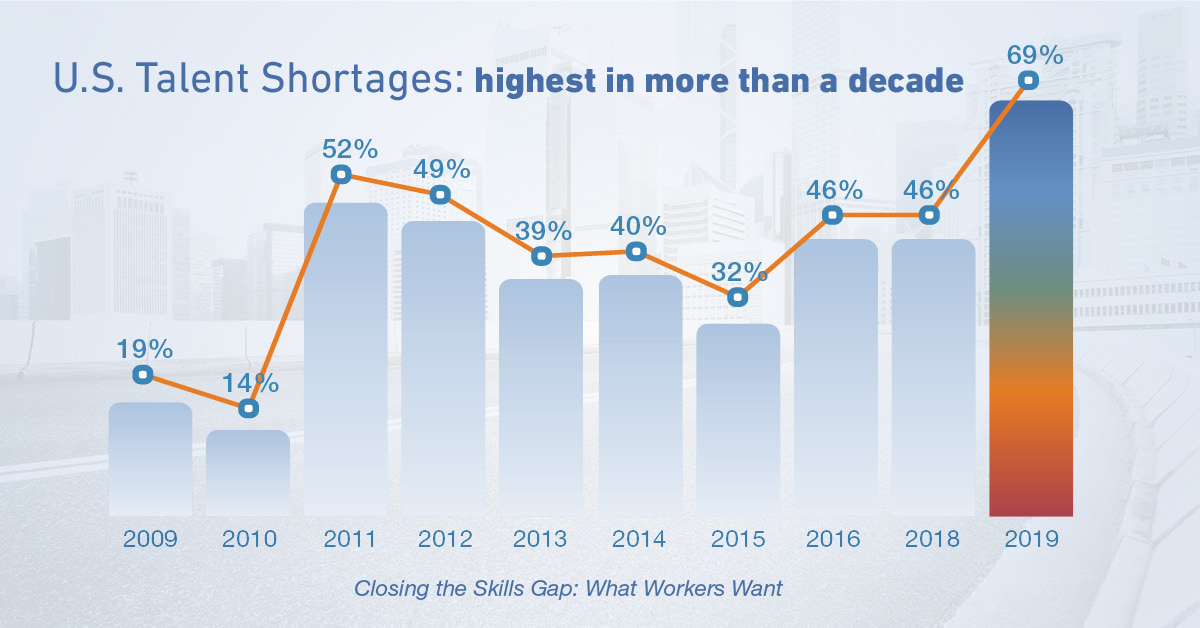Skills required for the most in-demand roles continue to evolve rapidly. See the top 5 sought-after technical skills in the United States.

The
Talent
Shortage
Talent
Shortage
With the pandemic and The Great Resignation fading in significance, one might expect the talent shortage to ease. Not so. A record 75% of U.S. companies are reporting difficulty finding the talent they need. In addition, employer hiring expectations remain high, with 46% of companies planning to add to their staff this quarter.
The new ManpowerGroup Talent Shortage infographic not only reveals the hardest-to-find skills in the country, but also explores the most in-demand skills employers look for, as well as the steps companies can take in order to make the next normal better for all.
About This Survey
Talent Shortage data identifies the proportion of employers who report difficultly filling positions in their organization. It reports on which jobs employers say are most difficult to fill, and identified candidate shortcomings that are preventing employers from filling positions.
SHORTAGES IN THE UNITED STATES
Talent shortages in the United States have risen to historical levels with 69% of employers having difficulty filling jobs--the highest in more than a decade.

In-Demand Roles in the United States
Skilled trades positions remain some of the toughest roles to fill on this year's list followed by IT and sales and marketing. View the hardest-to-fill roles in the United States.

TALENT SHORTAGE BY COMPANY SIZE
A GENERATIONAL VIEWPOINT ON WORK
Aside from pay, flexibility and challenging work, what workers want varies by age, geography and gender.
A Generational Viewpoint on Work

Gen Z (age 18-24)
This group is ambitious, hungry for cash and career development, but women and men have different desires. Women prioritize pay twice as much as their next priority – flexible hours – while men say a strong brand, diversity and good health insurance are most important.

Millennial (age 25-34)
Both men and women want flexibility and challenging work. However, flexibility is critical for women whereas for men, it is a nice-to-have. Women continue to do most of the emotional labor and unpaid work at home balancing work around other commitments.

Gen X (age 35-54)
This is when the quest for balance kicks in. Men prioritize flexibility as much as women. They both want the ability to work remotely some of the time and they want their share of parental leave.

Boomers (age 55+)
Driven by pay, challenging work and flexibility, boomers place the highest priority on leadership and teams. The boss they work for and the people they work with matter a great deal as well.
